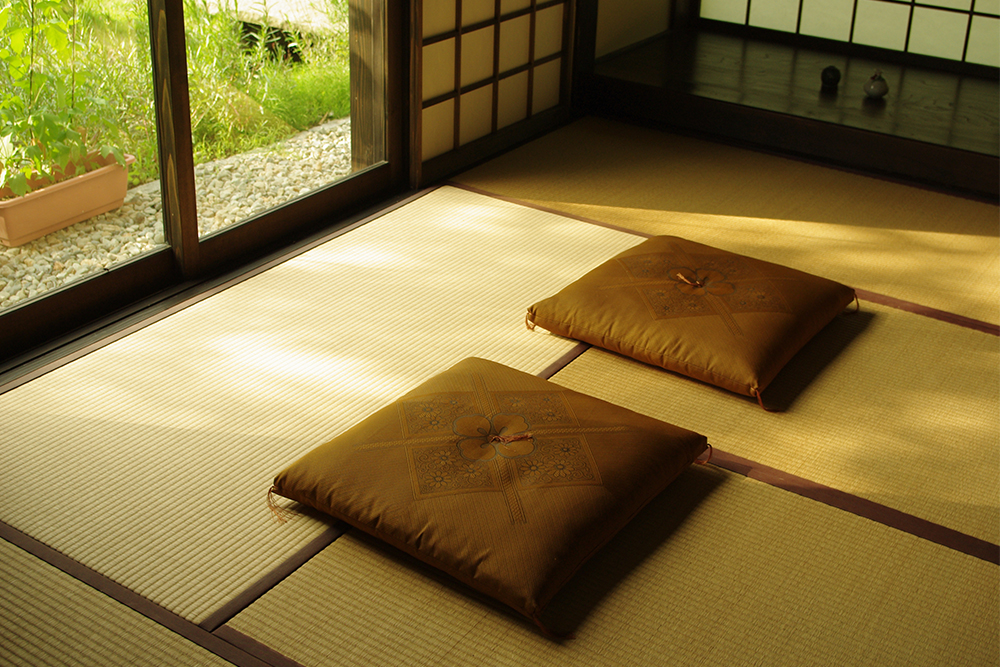It is a daily necessity unique to floor life. But a point to note is that it is not intended for the cats who are at home to sleep on. Since it is intended for sitting, so-called cushions are different. Actually, it is quite culturally very significant.
Originally, sitting on a wooden floor was a bit difficult, so tatami mats were laid. Eventually, sitting directly on the tatami mats was concerned strange, so an individual named “Shitone” created the zabuton. A cushion, called “shitone,” was the original structure that gave rise to the current shape of the “zabuton.” Shitone was a small, square, thin tatami mat decorated with decorative cloth. This zabuton can also be seen in a traditional Japanese card game called “Hyakunin Isshu,” with the face of 100 or so historical figures. Apparently, the “shitone” wasn’t up to satisfaction; they wanted to make it thicker or softer, amongst other points of improvement. These edits culminated to form the “zabuton.” It was about 300 years ago in the middle of the Edo period.
We’ve explained the nitty gritty details of the zabuton, but the most important takeaway is that represents respectful relations between owners of the house and the customers. These relationships and customs are what made the zabuton today. Zabuton is an item that symbolizes respect and respect for the other party. There is basically a Zabuton in every Japanese-style room, not limited to tatami mats / board. Of course, there are ways to use it. How to recommend the use of a zabuton to customers, how to respond on the recommended side… Depending on the situation, it may be quite detailed. There are so many details, so we’ll explain the most basic important things, so at least you understand the basic manners.
First of all, do not sit until you are recommended the use of a zabuton. The landlord (the owner of the room) encourages sitting on it after greeting everyone in the room. Do not step on the zabuton when you sit down. Basically, changing the position and orientation of the zabuton is no good. It is rude to the landlord. Go up on the cushion by crawling on your knees and basically sit straight. After the landlord says “please sit and relax” or “please break your feet,” you can change to a cross-legged or side-sitting position. Please say thank you when you leave. Do not step on the zabuton.
These are basically basic practices. It is not always required, but it is nice to know, so please be aware of this time.
This here is a digression… But cats from all walks of life love “zabuton”. Moreover, despite the first appearance, they get used to it. After all, is there a “respectful” nature from the beginning?




_op.png)
_001.png)
_002.png)
_003.png)
_004.png)
_005.png)
_006.png)
_007.png)
_008.png)
